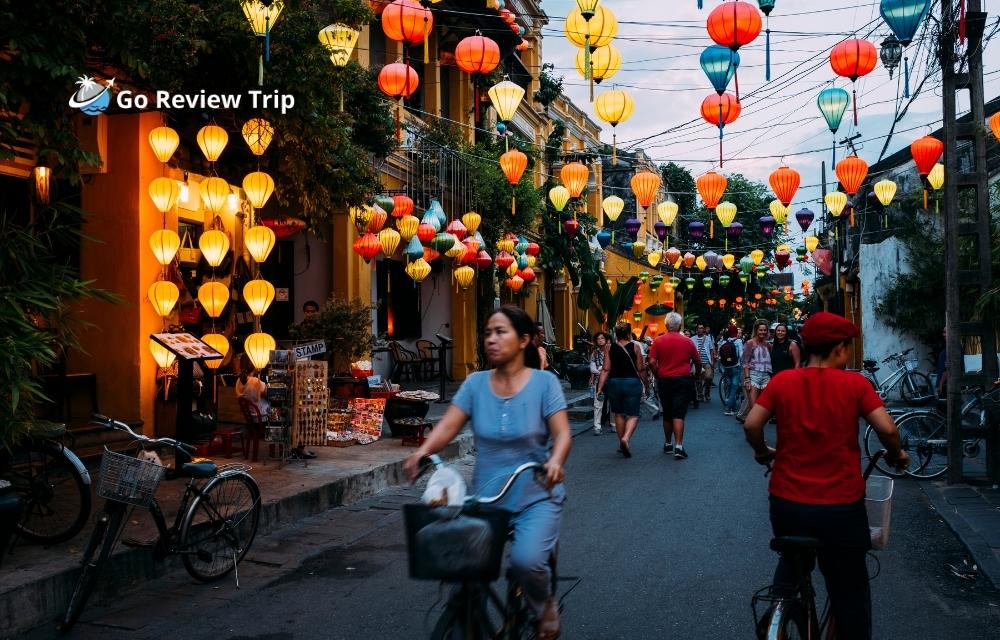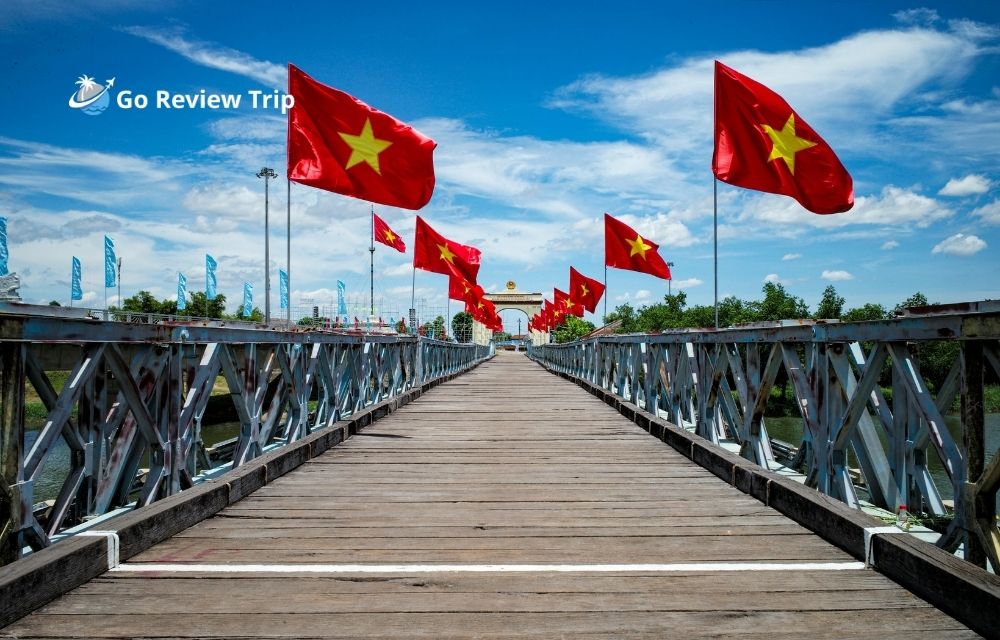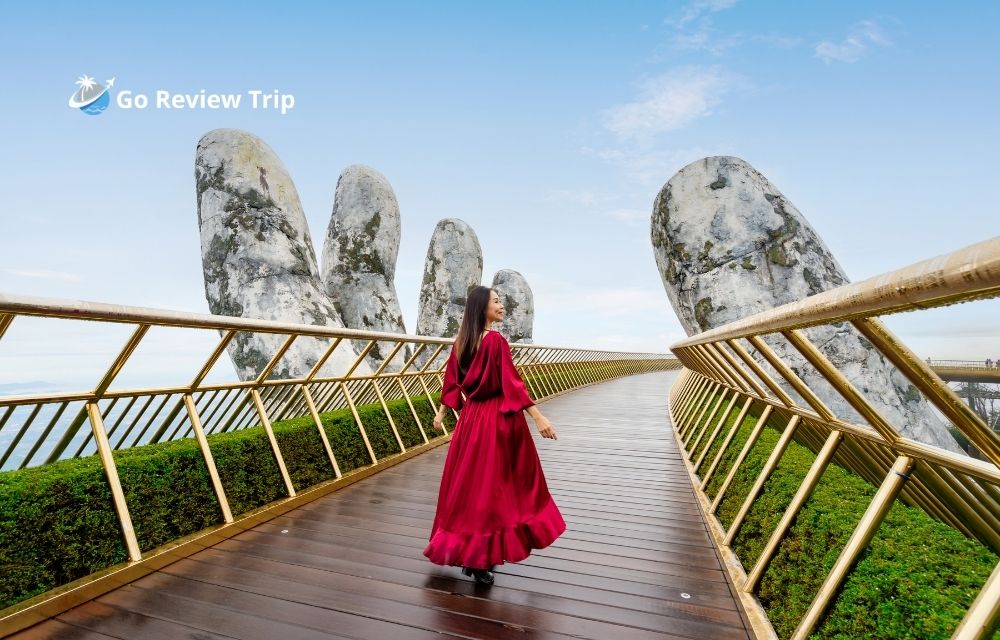My adventure in Vietnam began exactly as I had dreamed. The humid air of Hanoi’s Old Quarter, thick with the scent of street food and the sound of a million motorbikes, felt like a symphony for the senses.
I spent my days getting lost in the labyrinthine alleyways, sipping rich iced coffee by the lake, and feasting on bowls of phở so good they made me close my eyes in appreciation.
The trip was a meticulously planned, two-week solo journey that would take me from the misty rice terraces of Sapa to the tranquil beaches of the south. I felt alive, fearless, and completely in love with the country.
A week into my adventure, however, the script took an unexpected and terrifying turn. I was on a trek in the mountains of Sapa, following a trail that was meant to be a simple, scenic hike.
A sudden downpour turned the dirt path into a muddy, treacherous slope. I lost my footing on a slick rock, and in a split second, my ankle twisted in a way it was never meant to. The pain was immediate and excruciating.
I knew instantly it was more than just a sprain. Lying there on the muddy path, miles from any paved road, the initial panic set in.
All my grand plans—the food tours, the boat cruise in Halong Bay, the final days relaxing on a beach—flashed before my eyes, replaced by the grim reality of a remote medical emergency.
This wasn’t just an inconvenience; it was a crisis.
It was in that moment of fear and helplessness that I truly understood the value of the travel insurance policy I had bought with a sigh and a click of a button a few months prior.

My trekking guide, a local Hmong woman named Mai, was a lifesaver. She helped me get to a small clinic in a nearby village, where the diagnosis was a severely sprained ankle that needed more advanced care.
A doctor recommended I get to a major hospital in Hanoi as quickly as possible. The thought of a long, painful bus ride was a new wave of panic. That’s when I made the call to my insurance provider.
I explained the situation, and to my immense relief, they took over. They arranged for a private car to take me the several hours back to Hanoi and, more importantly, they handled all the communication with the hospital staff.
That simple, pre-paid policy didn’t just cover my medical bills; it provided an immediate safety net and the peace of mind that a logistical nightmare was being handled by professionals. It turned a trip-ending disaster into a manageable setback.
My journey continued, albeit with a crutch and a bit more caution, but it taught me a valuable, unforgettable lesson about why you should never, ever travel without the right insurance.
Table of Contents
- 1 The Reality Check: Why You Can’t Afford to Skip Travel Insurance for Vietnam
- 2 Navigating the Market: How to Find the Best travel insurance for Vietnam
- 3 Comparing the Top Providers: Who Offers the Best travel insurance for Vietnam?
- 4 My Personal Recommendation: The Policy I Chose and Why
- 5 A Final Word of Advice: Don’t Let Fear Ruin Your Fun
The Reality Check: Why You Can’t Afford to Skip Travel Insurance for Vietnam
When you’re caught up in the excitement of planning a trip to a vibrant, exotic destination like Vietnam, thinking about travel insurance can feel like a chore. It’s an extra expense, another box to tick on a long list.
Many travelers, especially those on a tight budget, are tempted to skip it, thinking, “What could possibly go wrong?” I can now tell you from personal experience that this is a dangerous assumption.

While Vietnam is a very safe country with friendly people and generally reliable infrastructure, a range of unexpected issues can arise that could not only ruin your trip but also cost you a fortune.
- Health & Medical Concerns: Vietnam’s bustling streets and delicious street food are part of its charm, but they also present certain health risks. Food poisoning is not uncommon, and while it’s often minor, a severe case could lead to dehydration and a hospital visit. Beyond that, tropical diseases like dengue fever are a real concern in certain regions and seasons. Access to quality healthcare, particularly in remote areas, can be limited, and being transferred to a hospital in a major city like Hanoi or Ho Chi Minh City can be incredibly expensive without coverage. A basic doctor’s visit may be cheap, but a serious medical emergency or an extended hospital stay can quickly rack up thousands of dollars in bills.
- Adventure Activities and Inherent Risks: Many of the most popular activities in Vietnam come with a certain degree of risk. Riding a motorbike, for instance, is a quintessential Vietnamese experience, but the chaotic traffic is a known hazard. Trekking in the mountains of Sapa or rock climbing in Halong Bay are thrilling, but they also carry the risk of injury. It’s a common misconception that all travel insurance policies cover these activities. Many standard plans have a long list of exclusions for “high-risk” or “adventure” sports. If you plan to engage in any of these activities, you absolutely must ensure your policy specifically covers them.
- Theft and Loss: While violent crime is rare, petty theft, especially in crowded tourist areas of major cities, can happen. A backpack, a wallet, or a phone can disappear in the blink of an eye. Dealing with the loss of your personal belongings is a hassle, but replacing a passport or the expensive gear you brought with you is an additional financial burden. Travel insurance can cover the cost of replacing your lost or stolen items, easing the pain of the incident. Furthermore, delayed or lost luggage from an airline can leave you stranded without your clothes and essentials at the start of your trip.
- Travel Disruptions: Imagine arriving at the airport to find your flight has been canceled, or that your tour operator has gone out of business. These are not just inconveniences; they can represent a significant financial loss. Travel insurance that includes trip cancellation and interruption coverage can reimburse you for non-refundable expenses, such as flights, hotel bookings, and pre-paid tours, if your trip is cut short due to an emergency. This type of coverage is especially important when planning a trip to a country that can be affected by unpredictable weather events like typhoons, which can impact flights and tours in Central Vietnam.
In the end, travel insurance is not a bet on something going wrong; it’s a bet on your ability to handle it if it does. It’s an essential part of being a responsible and prepared traveler, ensuring that a simple mistake or stroke of bad luck doesn’t turn your dream vacation into a financial nightmare.
Finding the Best travel insurance for Vietnam requires a bit of research, but it’s time well spent. The market is full of providers offering a wide range of policies, and not all of them are created equal. To make an informed decision, you need to understand the different types of coverage and what they mean for your specific trip.
Key Coverage to Look For

When you’re sifting through policies, these are the core components you should never compromise on:
- Emergency Medical & Evacuation: This is the most critical part of any travel insurance policy. It’s a safety net for any medical issues that arise while you’re abroad. Look for a policy with high medical coverage limits—at least $100,000 USD is a good starting point. This should cover hospital visits, doctor fees, prescription medications, and ambulance services. Crucially, your policy must also include emergency medical evacuation. Imagine you have a serious accident while trekking in the remote mountains of Ha Giang. A local hospital may not have the resources to treat you, and a helicopter or air ambulance transfer to a major hospital in Hanoi or Ho Chi Minh City could cost tens of thousands of dollars. Without this coverage, you would be personally responsible for that massive bill.
- Trip Cancellation & Interruption: This coverage protects your financial investment before and during your trip. Trip cancellation reimburses you for non-refundable costs (flights, pre-paid hotels, tours) if a sudden illness or family emergency forces you to cancel your trip before you leave. Trip interruption coverage kicks in if you have to cut your trip short for a covered reason, reimbursing you for the unused portion of your trip and covering the cost of an early return home. This is especially important for multi-stop trips or expensive, pre-booked tours.
- Baggage & Personal Belongings: This coverage is designed to protect your physical items. It covers the costs associated with lost or delayed luggage from an airline, as well as the theft or accidental loss of your personal belongings while traveling. A good policy will have a reasonable coverage limit and an acceptable per-item limit, so you’re not left out of pocket for a stolen camera or smartphone. For example, if your backpack is stolen from a cafe in Ho Chi Minh City, this coverage would help you replace your essential items and gear.
- Adventure Activities Clause: As I learned firsthand, this is a make-or-break clause for a trip to Vietnam. Many standard travel insurance policies explicitly exclude coverage for activities like motorbiking, trekking, rock climbing, kayaking, and scuba diving. If you plan to ride a scooter to explore the countryside, or embark on a multi-day trek, you must read the fine print and ensure your policy covers these specific activities. Look for an adventure sports rider or a policy specifically designed for this type of travel.
Understanding Policy Specifics
Beyond the main coverage types, there are a few other details you should pay close attention to:
- Deductibles/Excess: This is the amount of money you have to pay out-of-pocket before your insurance coverage kicks in. A lower deductible means you pay less up front, but the policy premium will be higher.
- Maximum Coverage Limits: Check the maximum payout for each category. A $50,000 limit for medical is a good start, but a $1,000 limit for baggage might not be enough if you have expensive camera equipment.
- Exclusions: This is arguably the most important section to read. Exclusions can include things like pre-existing medical conditions, injuries sustained while under the influence of alcohol or drugs, or specific destinations. Be sure your chosen policy does not exclude a key aspect of your trip.
Comparing the Top Providers: Who Offers the Best travel insurance for Vietnam?
Finding the Best travel insurance for Vietnam isn’t about finding a single “best” policy; it’s about finding the policy that best fits your needs, budget, and travel style. While I won’t name specific companies to avoid a sales pitch, I can break down the types of policies and what they typically offer, so you know what to look for.
The Budget-Friendly Choice: The Bare Necessities
This type of policy is a popular choice for backpackers and students who are trying to keep costs low but still want peace of mind. It focuses on the essentials, providing a safety net for major issues.
- What’s included:
- Emergency Medical: Covers hospitalization and doctor’s visits up to a certain limit (e.g., $50,000 – $100,000).
- Emergency Evacuation: A basic level of coverage is included, often with a lower limit than premium plans.
- Personal Liability: Covers you if you accidentally cause injury to someone or damage their property.
- What’s often missing:
- High coverage for baggage and personal belongings.
- Trip cancellation for non-refundable costs.
- Specific coverage for adventure activities like motorbiking.
- Who it’s for: A traveler whose main concern is a medical emergency and who is willing to take on more risk for their non-refundable trip costs and personal items.
- What’s included:
The Mid-Range All-Rounder: The Sweet Spot
This is the most common type of policy and the one I would recommend for most travelers. It strikes a good balance between cost and comprehensive coverage, addressing most common travel risks.
- What’s included:
- High Medical Coverage: Limits are often higher, from $250,000 to $500,000, giving you greater security.
- Trip Cancellation & Interruption: Covers a decent percentage of your trip costs if something goes wrong.
- Baggage & Personal Belongings: A good coverage limit (e.g., $2,000 – $5,000) with a reasonable per-item limit.
- Basic Adventure Activities: May cover certain activities like light trekking or scuba diving (to a certain depth), but always check the fine print for specifics.
- Who it’s for: The average traveler planning a 1-2 week trip with a mix of sightseeing, a few adventure tours, and a desire for robust protection. This policy offers a fantastic return on investment for the peace of mind it provides.
- What’s included:
The Premium Package: The Full Safety Net
This policy is for travelers who want the highest level of protection and are planning an adventure-heavy or very expensive trip.
- What’s included:
- Unlimited or High-Limit Medical Coverage: The highest coverage limits available, including an extensive emergency medical evacuation clause.
- Comprehensive Trip Cancellation: Covers a higher percentage of trip costs and often has more flexibility in what’s considered a “covered reason.”
- High Baggage & Personal Belongings Coverage: High limits for your gear, including specific coverage for electronics and expensive items.
- Extensive Adventure Sports Coverage: Policies in this tier are most likely to include coverage for high-risk activities like motorbiking, rock climbing, and more without a special rider.
- Who it’s for: Backpackers planning to ride a motorbike from north to south, families traveling with expensive gear, or anyone wanting ultimate peace of mind.
- What’s included:
My Personal Recommendation: The Policy I Chose and Why
After my incident in Sapa, I was so grateful that I had chosen a mid-range, all-inclusive policy. I had spent around $150 for two weeks of coverage, and it was the best money I’ve ever spent.
I went with the all-rounder because my trip included a mix of city exploration, trekking, and a boat trip.
I didn’t want to worry about whether a sprained ankle on a mountain trail would be covered, or if my camera gear would be protected on a crowded street.
The policy I chose offered a generous medical coverage limit, covered my baggage, and, most importantly, included a clause for trekking and other non-professional adventure sports.
When I made that phone call from the remote clinic, my insurance company’s response was swift and professional.
They handled the logistics of my transport back to Hanoi and all the payments with the hospital.
I was able to focus on my recovery and, thanks to my trip interruption coverage, they even helped me reschedule some of my pre-paid tours in Central Vietnam.
My original plans were disrupted, but my entire trip wasn’t ruined. I was able to travel on crutches and still enjoy a beautiful cruise in Halong Bay and the food scene in Ho Chi Minh City, all because I had the right safety net in place.
A Final Word of Advice: Don’t Let Fear Ruin Your Fun
Ultimately, the thought of something going wrong on a trip is scary. But the solution isn’t to stay home or to worry constantly—it’s to be prepared. My experience taught me that travel insurance is not an optional extra; it’s a fundamental part of responsible travel, just like a passport and a flight ticket. It’s an investment in your safety and a shield against the unforeseen.
So, as you plan your incredible trip to Vietnam, don’t let the “what-ifs” hold you back. Do your research, choose a policy that fits your specific needs and itinerary, and then pack your bags with confidence. Get the right insurance, and then go have the adventure of a lifetime.


